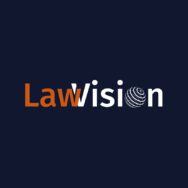We wrote about some of this in a prior year’s newsletter and felt it was worth repeating, particularly in light of the post-COVID leadership world we are living in.
There is nothing more rewarding as a leader in a business environment than helping a business or a team reach its goals. Accomplishing goals relies solely on the people in the organization, and especially on the effectiveness of leadership. In our work with law firms, the one issue mentioned most often is leadership—good or bad. Leaders include management committee members, department heads, practice group leaders, and administrative department leaders. All in leadership roles should want to improve their style to become more effective.
Harvard’s Ronald Heifetz once wrote, “Being a leader is easy when things are going well.” His book, Leadership Without Easy Answers, is a great read and not just consultant speak. He writes, “Leadership is the process of adaptive work, elevating followers by discussing and aligning value systems to face reality. Leadership is putting the finger on the real challenges that threaten our survival and changing the mindset of the followers.” In his book, The Practice of Adaptive Leadership, he advises, “When change requires you to challenge people’s familiar reality, it can be difficult, dangerous work. Whatever the context–whether in the private or the public sector–many will feel threatened as you push through major changes. But as a leader, you need to find a way to make it work.” Leaders were able to experience what Heifetz describes during the recent COVID global pandemic. Forced to lead in a way that challenged many, leaders had a turn at on-the-job learning.
Taking a look at oneself in the mirror and being honest about the type of leader one is perceived to be (compared to the type of leader you aspire to be) is an important part of the journey towards becoming a good and effective leader. How do you know when you have reached a level of leadership effectiveness? Frankly, the best mirror available for this is a leadership (aka a “360”) assessment. We are certified in and prefer the tools from Human Synergistics, a global leader in organizational effectiveness. These leadership assessments provide a substantive summary of one’s leadership style that will cause one to dig deep into self-reflection and see oneself as others experience you. Further, these tools provide a roadmap that allows one to see the behaviors their leadership style drives in others. And the ability to compare your assessment of self, in contrast to the current leadership style people are experiencing from you. There are other tools for self-assessment, too. What’s important is to use one of these tools to help you become a stronger leader. The second part of this process is to actually work on a leadership plan for change. This part is more difficult and often only accomplished by those who really want to be better or great leaders.
Any time a leader wants to better themselves, consider where you are in your current phase of leadership development and where you want to be next. Work hard at leadership. Read books–Heifetz is one of the best authors about this topic and writes in a thought-provoking manner. Take assessments–Human Synergistics offers some of the best assessments in this area and delivers thought-provoking, actionable reports.
Why focus on leadership at all? Most of us become leaders with no or little training in the world of leading and developing people. Few of us have training in human behavior that could help us navigate various personalities and behaviors and their impact on the organization overall. And last, we often underestimate the level of communicating we provide within our firms and our teams. As leaders we need to communicate, empower, and provide feedback. Common criticisms of many leaders in law firms pertain to lack of communication, lack of clarity about goals, and lack of clarity on advancement metrics. The assessment one chooses will show how well you rank in these areas.
Human Synergistics uses a framework for much of its work with development and culture called The Circumplex. On the Circumplex you will see those styles which describe various behaviors. Those behaviors, in turn, cause others to act in response. Educating oneself about how one’s own leadership style may impact others’ behaviors is well worth the time and money. Improving leadership and communication goes beyond the workplace and can have a positive impact on relationships with family, friends, and community.
To gain a better understanding of the styles, what follows is a brief overview of each. Think about your style and which behaviors you are seeing with your team members. Chances are some of your leadership characteristics are driving these behaviors—good and bad. Human Synergistics describes the assessment: “The assessment results allow you to compare your own impressions of your leadership strategies to your strategies as described by others.” Here are some brief snippets of the three main clusters of leadership styles:
Measurement of the Constructive Styles indicate the extent to which you as a leader motivate and encourage others to…
- Set challenging but realistic goals
- Develop themselves
- Be supportive of people
- Treat people as members of the team
- Respect diverse backgrounds and viewpoints
- Show trust and confidence in their peers and associates
- Actively support others in their career development and growth
- Discuss decisions with those who will be affected by them
The specific styles within the Constructive Styles are: Achievement; Self-Actualizing; Humanistic-Encouraging; Affiliative.
Measurement of the Passive/Defensive Styles indicate the extent to which you as a leader motivate and require others to…
- Gain the full agreement of those around them
- Conform
- Do only what they are told
- Clear all decisions with superiors
- Please those in positions of authority
- Lead others to feel insecure and uneasy about interpersonal relations within the organization
- Avoid any possibility of being blamed for a mistake
The specific styles within Passive/Defensive are: Approval; Conventional; Dependent; Avoidance.
Measurement of the Aggressive/Defensive Styles indicate the extent to which you as a leader motivate and drive others to…
- Point out mistakes
- Act forceful and aggressive
- Operate in a “win-lose” framework
- Set unrealistically high goals
- Play “politics” to gain influence
- Protect your power base, maintain your authority
- Distance yourself from peers who are experiencing problems
- Feel apprehensive, insecure about their position and authority
- Dismiss good ideas by pointing out flaws
- Stay on top of every detail and work long hours to attain narrowly defined
objectives
The specific styles are: Oppositional; Power; Competitive; Perfectionistic.
The research and work in this area of leadership is compelling. The data is extremely powerful and backed by thousands of research data points collected from many leaders across organizations. All to help us to become better leaders.
———————————————————————————-
These descriptions are the copyright of Human Synergistics–For more information
about the tools Silvia is describing, visit www.humansynergistics.com.
Silvia Coulter is a Principal with LawVision and certified in leadership diagnostic tools. She may be reached at scoulter@lawvision.com or 978-526-8316.
Posted In



